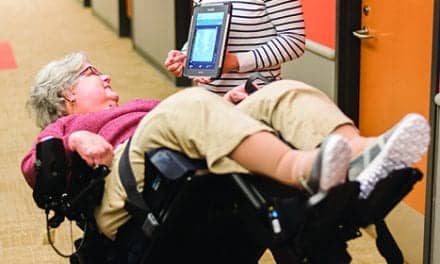In a first-of-its-kind study published in the November 2008 Foot & Ankle International, the official journal of the American Orthopaedic Foot & Ankle Society (AOFAS), Rosemont, Ill, the expectation of orthopaedic post-operative pain was directly correlated with the actual incidence of pain following foot and ankle surgery.
The lead author, AOFAS member Loretta B. Chou, MD, is an orthopaedic foot and ankle surgeon in the Department of Orthopaedic Surgery, Stanford University Medical Center, Stanford, Calif, who is very familiar with the pain complaints of orthopaedic patients.
Orthopaedic procedures have been reported to have the highest incidence of pain compared to other types of operations. Chou and associates conducted a prospective study of 98 patients undergoing orthopaedic foot and ankle operations at the same hospital, aiming to evaluate each patient’s pain experience preoperatively and postoperatively.
Surgeries were a mixture of inpatient and outpatient procedures on male and female patients, with the average age being 46.5 years. The patients were given a Short-Form McGill Pain Questionnaire (SF-MPQ) before and after surgery to evaluate their levels of pain at both times. The SF-MPQ is is a patient questionnaire with three questions concerning pain. It consists of 15 pain descriptors, the Present Pain Intensity (PPI) index, and a visual analogue scale for pain (VAS). Their study suggests that the expectation of pain going into surgery may contribute to its subsequent occurrence.
“Our hypothesis that anticipated pain would predict postoperative pain experience was based on preliminary studies that show that expectation of pain modulates changes in the brain,” Chou says. “This may be the brain sending projections to the spinal cord that increases pain signals. We found that believing there will be pain after surgery leads to just that, pain.”
Results showed that pain severity was highest following foot and ankle surgery at the 3-Day Post-Operative Pain assessment whereas, 6 weeks out after surgery, the majority of patients felt little or no pain. The early pain was even greater than that anticipated by the patients. The severity of preoperative pain was highly predictive of the group’s anticipated postoperative pain as well as their level of pain at 6 weeks after surgery. It was also important that preoperative pain and anticipated pain predicted higher immediate postoperative pain following foot and ankle operations.
A similar study, which was published in the July 2008 issue of the Journal of Pain and Symptom Management, found that cancer patients who had a more optimistic outlook experienced less severe pain.
“While we cannot isolate the exact cause, optimistic patients suffered much less postoperative pain than their pessimistic counterparts,” Chou says. “This result may demonstrate that patients are good at predicting pain, or that their expectation of greater pain may contribute to its subsequent occurrence.”
This is the first study evaluating preoperative and postoperative pain experienced by patients undergoing orthopaedic foot and ankle surgery, the group says. The study may aid in the surgeon’s choice of treatment of acute pain following surgery to prevent increased illness associated with poorly controlled pain after orthopaedic foot and ankle operations.
New studies have begun, addressing some of the limitations of the initial study, such as inclusion of the use of pain medication and limiting the types of operations to two. "A criticism of this publication is that all types of foot and ankle procedures were included," Chou says. "In the follow-up studies, one study focuses on ankle fractures and the other, removal of painful hardware from the foot and ankle.”
[Source: AOFAS]




